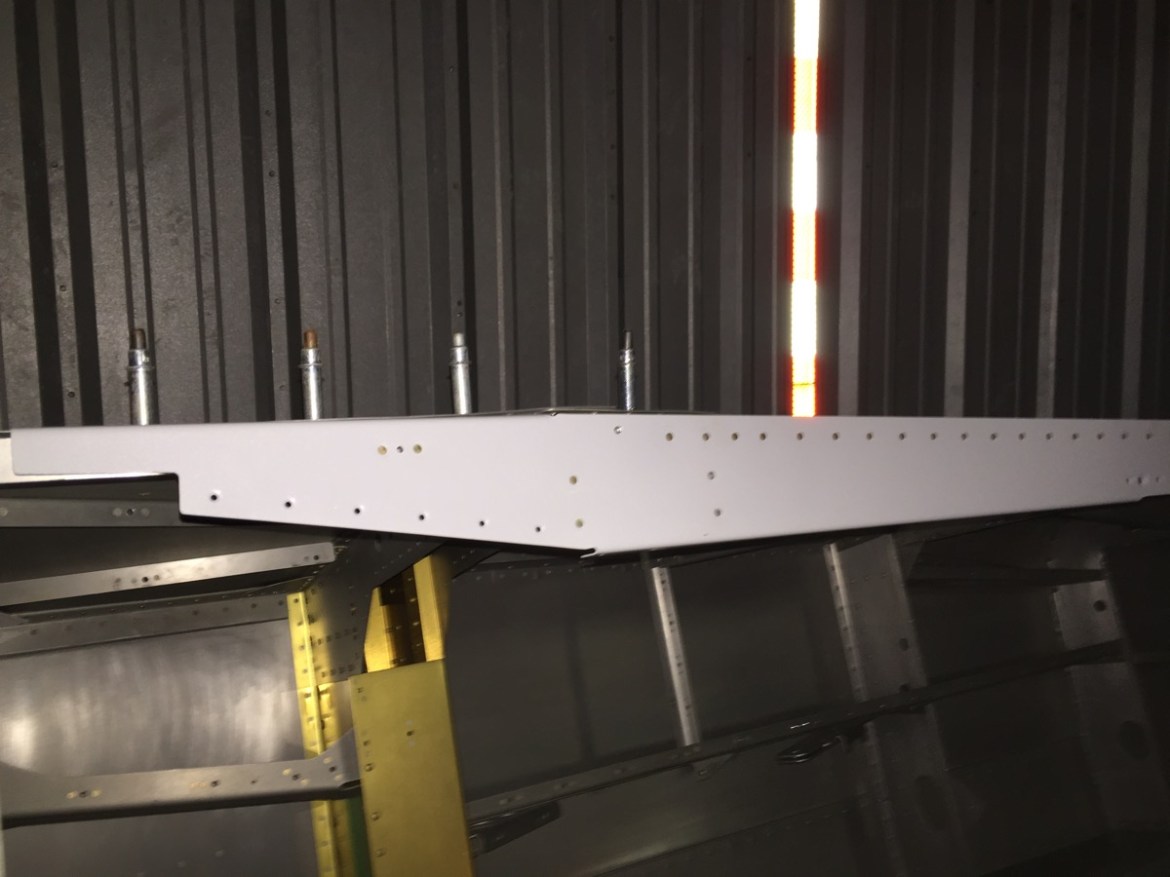Fuselage 26 – Mounting the Horizontal Stab
Today is an exciting, and somewhat nerve racking day. Its time to begin attaching the horizontal stabilizer to the fuselage. A few of these bolts require an accurate drill, and leave little room for error. The first step was to sit the horizontal stab in place. The forward spar sits on top of the 1/8 aluminum spacers shown here. 
The rear spar requires a 3/16″ lift. The best spacer to use is a 3/16″ drill bit. Lightly clamp the fuselage in place and center it using the intersection of the rear spar halves.

Here is the centered position marked with the ruler and blue ink. You can see perfect alignment with the intersection of the two spar halves. 
Now its time to clamp the front lightly. The clamps at the rear should be firmly in place to ensure the center position does not move. However, you want some wiggle room in the front as you ensure that horizontal stab is perpendicular to the fuselage.

This is also the time to ensure the horizontal stab is level. Mine appears just ever so slightly higher on the left. However, its true to the fuselage level. I sat a portion of aluminum angle on top of two wooden block spacers. 

Here’s a good picture of the level, angle, and spacers in position. 
After this, you want to verify that the angle of incidence is zero degrees. This is measured between the chord line of the horizontal stabilizer and the top longerons. The tooling holes in the ribs are centered on the chord line. I used a cleco in each tooling hole and then measured. The alignment was correct.


To ensure the stab is perpendicular to the fuselage at a 90 degree angle, I measured from the intersection of the cockpit rails to the aft outer corner of each side of the stab.

I offset the starting point at 2 feet to counterbalance the tape measure. 
Now here comes the tricky part. After the fuselage has been leveled and trued in each direction, its time to drill the most difficult holes. These holes will go through the forward spar splice angle, the aft deck, angle and upper longerons. There isn’t much, if any wiggle room. Further compounding the difficulty, is the ambiguity of the diagrams and instructions. The instructions call for the outside bolt to be 1/2″ in from the outside of the upper longeron. I used my small ruler placed between the skin and the longeron to draw the precise location of the outer edge of the longeron. 

Here is a good shot of the underneath. You can see the intersection gives little room for proper edge distances. Be sure to start with a small pilot hole so that you can walk the larger drill bits in the direction you need as appropriate.


My right outer bolt is too close to the longeron edge for my comfort. Its only just on the good side of edge distances for the angle. This illustrates the futility of trying to have all 3 edge distances in alignment. Some people argue that the longeron is the most important.

The other hole is much more comfortably in edge distance tolerances. 
Here’s why I don’t necessarily buy the longeron being the most important edge distance. The diagram, which is to scale, clearly shows that the hole as positioned by Van’s engineering team does not meet the edge distance requirements. I have marked the appropriate edge distance in blue on the ruler below. 
All this being said, I was rather perturbed by the edge distance of the hole on the right longeron, and I decided to call it a night. I’d need to read up on this issue and give it some thought.
































